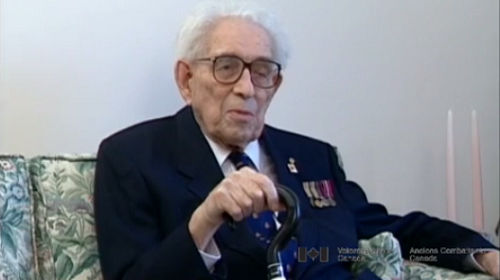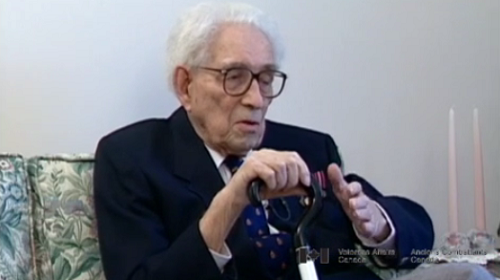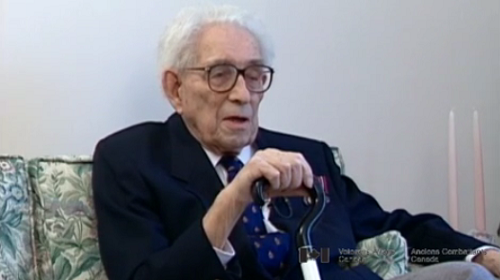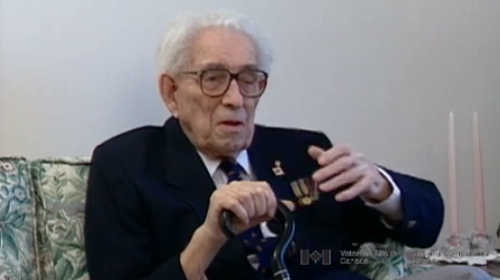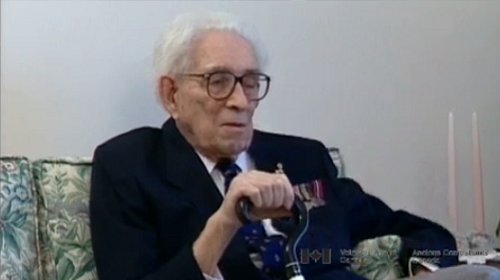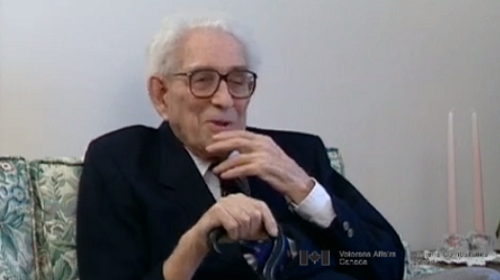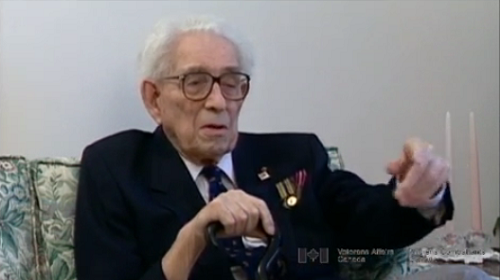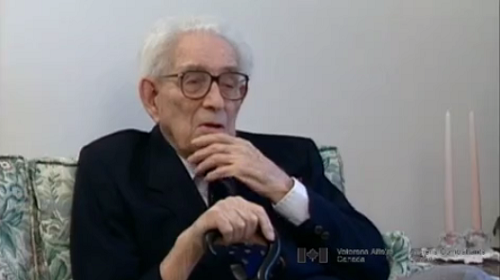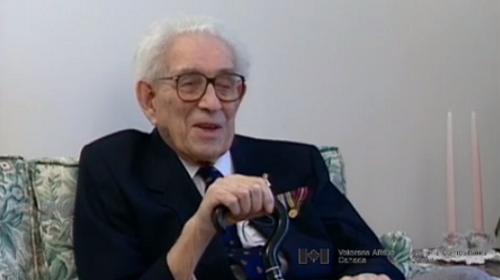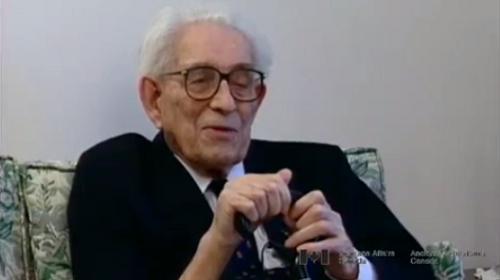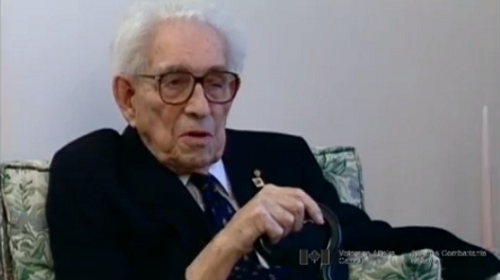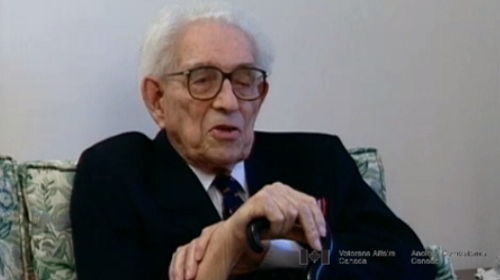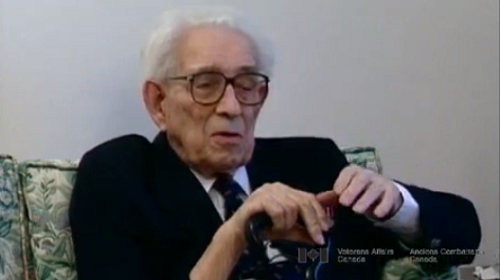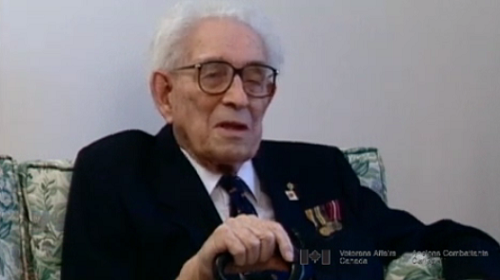German Long Range Shelling
Heroes Remember
German Long Range Shelling
Transcript
Description
Mr. Burton describes the Germans' use of long-range naval guns to shell the storage yards at St. Pol. He describes the predictable timing of the bombardments and the unpredictability of the bomb fragments.
Robert Burton
Robert Burton was born on February 21, 1896 in Dundas, Ontario. After public school, he was accepted into university which he attended from 1914 to 1916, in the Canadian Officer Training Corps. For a time, he worked at Massey, checking shrapnel shells. Despite being shortsighted, Mr. Burton was recruited into the 13th Brigade in Mar, 1916. In England, he joined the 5th Division, a reinforcement unit, and deployed to France with the 2nd Division as a sapper. Mr. Burton became a mounted courier at Courcelette, and had several interesting experiences in that capacity. He witnessed and was attacked by Gotha bombers at Arras, and was shelled at St.Pol. Mr. Burton also served in the trenches at Amiens. During the 2nd World War, he was a very successful engineering instructor at camp Petawawa, where he attained the rank of Major.
Meta Data
- Medium:
- Video
- Owner:
- Veterans Affairs Canada
- Duration:
- 1:58
- Person Interviewed:
- Robert Burton
- War, Conflict or Mission:
- First World War
- Branch:
- Army
- Units/Ship:
- 2nd Division (Special Force)
- Rank:
- Private
- Occupation:
- Sapper
Related Videos
- Date modified:



